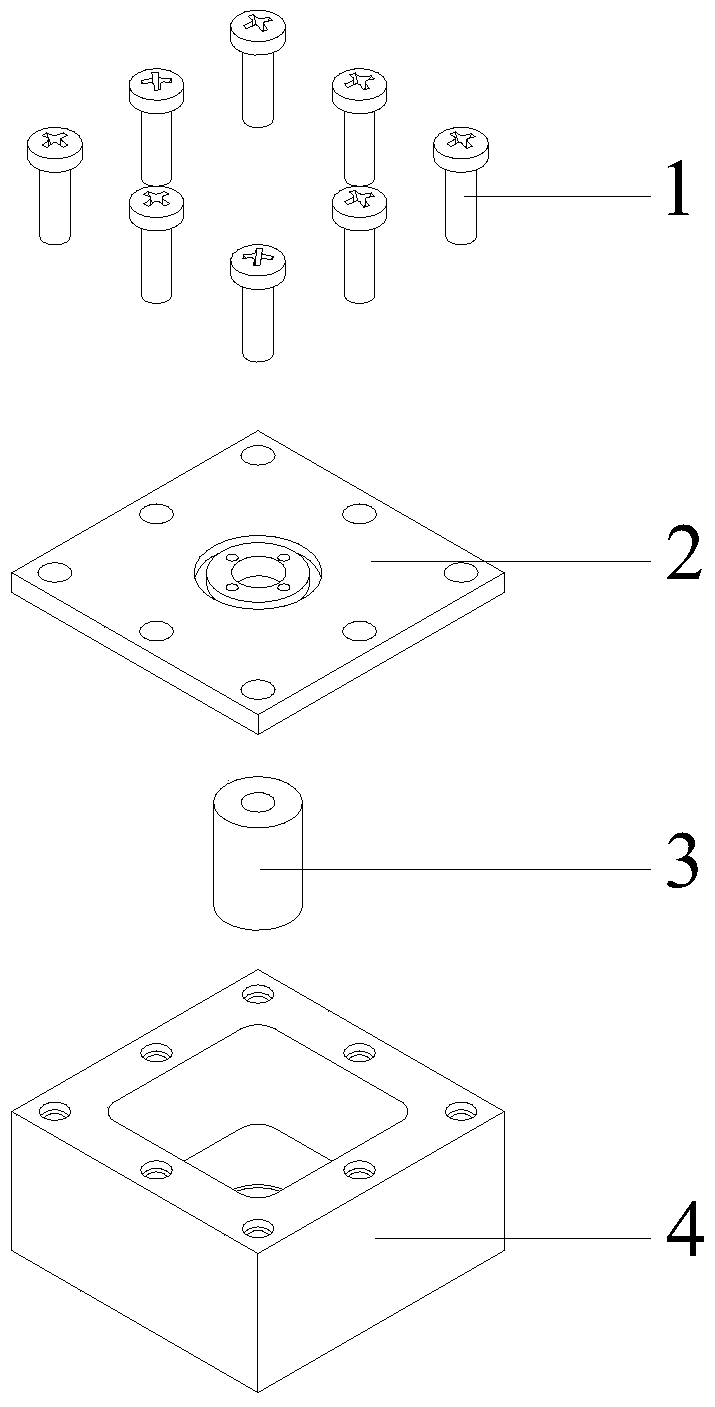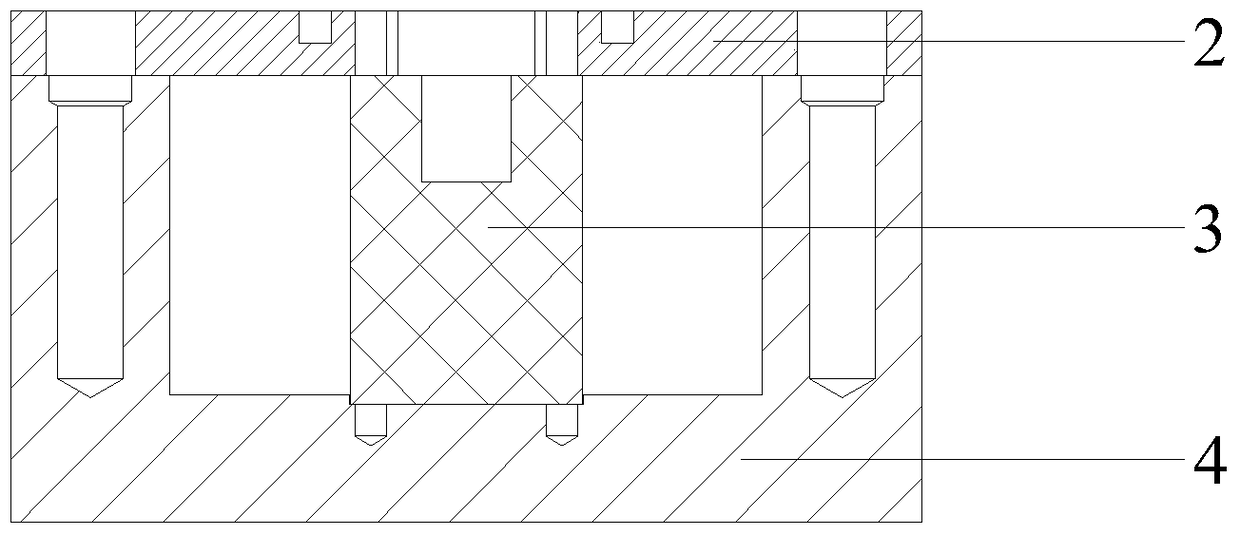ultra-small dielectric resonator
A dielectric resonator, dielectric resonance technology, applied in resonators, waveguide devices, circuits, etc., can solve the problems of increased product scrap rate, heavy product quality, poor heat dissipation performance, etc. and the effect of quality reduction and reliable product performance
- Summary
- Abstract
- Description
- Claims
- Application Information
AI Technical Summary
Problems solved by technology
Method used
Image
Examples
Embodiment Construction
[0024] The present invention will be described in further detail below in conjunction with accompanying drawing and specific embodiment, but described specific embodiment is only for explaining the present invention, does not limit protection scope of the present invention:
[0025] Such as figure 1 and figure 2 As shown, this embodiment relates to an ultra-small dielectric resonator, including a cover plate 2, a dielectric resonator rod 3 and a metal cavity 4 with a circular shallow hole 5 at the bottom, and the cover plate 2 is fixed on the metal cavity 4 by an assembly screw 1 Above, the dielectric resonator rod 3 is positioned and fixed at the bottom of the metal cavity 4 through the circular shallow hole 5 at the bottom of the metal cavity 4 .
[0026] The outer surface of the cover plate 2 is provided with an annular shallow groove 8 coaxial with the dielectric resonance rod 3, and the inner diameter of the annular shallow groove 8 is equal to the outer diameter of the...
PUM
| Property | Measurement | Unit |
|---|---|---|
| diameter | aaaaa | aaaaa |
| thickness | aaaaa | aaaaa |
Abstract
Description
Claims
Application Information
 Login to View More
Login to View More - R&D
- Intellectual Property
- Life Sciences
- Materials
- Tech Scout
- Unparalleled Data Quality
- Higher Quality Content
- 60% Fewer Hallucinations
Browse by: Latest US Patents, China's latest patents, Technical Efficacy Thesaurus, Application Domain, Technology Topic, Popular Technical Reports.
© 2025 PatSnap. All rights reserved.Legal|Privacy policy|Modern Slavery Act Transparency Statement|Sitemap|About US| Contact US: help@patsnap.com



